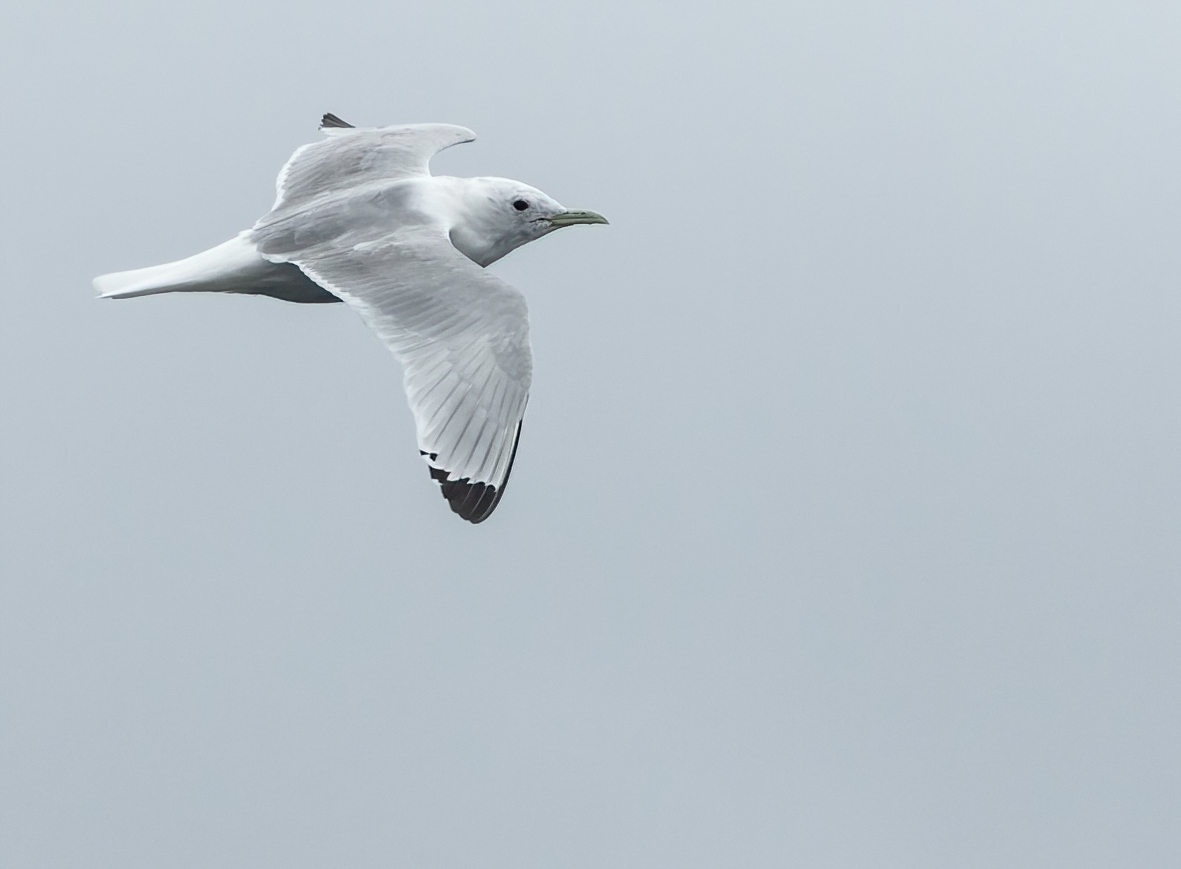Black-legged Kittiwake
Rissa tridactyla pollicaris
 Black-legged Kittiwake ·
Rissa tridactyla pollicaris
·
02-04-2022 · Joachim Bertrands
Black-legged Kittiwake ·
Rissa tridactyla pollicaris
·
02-04-2022 · Joachim Bertrands
| Datum | 2 april 2022 |
|---|---|
| Locatie | Pacific Ocean, British Columbia |
| Fotograaf |
|
| Bekeken | 4103 × |
| Ondersoort pollicaris van de noordelijke Stille Oceaan. Bizar genoeg heeft deze wel een volledig ontwikkelde achterteen, en is er dus van drieteenmeeuw niet veel meer aan! |
Discussie
Max Berlijn
·
9 april 2022 04:52
O, gaaf, daar lijkt split technisch dan misschien wel eer aan te behalen? net als aan de Noordse Stormvogels daar ?
George Sangster
·
9 april 2022 12:18, gewijzigd 9 april 2022 12:50
Er zijn mtDNA verschillen tussen pollicaris en tridactyla gerapporteerd, maar de desbetreffende studie is voor zover ik weet nooit gepubliceerd.
Patirana, A, Friesen, VL & Chardine, J 2000. Genetic structure and geographic variation in global populations of the Black-Legged Kittiwake, Rissa tridactyla. Poster presentation at 11th Pacific Seabird Group meeting, Napa, California.
ABSTRACT Black-legged kittiwakes are small, pelagic cliff-nesting gulls with a sub-arctic and arctic breeding distribution. Generally, two subspecies are recognized; R. tridactyla pollicaris which is confined to the North Pacific and R. tridactyla tridactyla which is restricted to the north Atlantic. Studies examining plumage variation in the North Atlantic have illustrated colony specific differences in melanism. This observation in combination with the philopatric nature of this species suggests that significant genetic differences and restricted gene flow may exist among kittiwakes from different colonies. The primary objectives of this study is to determine the extent of genetic structuring and evolutionary histories of Atlantic tridactyla and Pacific pollicaris colonies using mitochondrial DNA (control region) and nuclear DNA (introns). Genetic variation was assayed by single stranded conformational polymorphism analysis (SSCPs) and direct sequencing of haplotypes. Preliminary results from the 3’ end of the control region show low haplotypic diversity of Atlantic populations suggesting that they may have experienced a series of bottlenecks in the recent past. Furthermore, we found no overlap between Atlantic and pacific haplotypes supporting previous subspecies designations. Statistical analyses provided further evidence for genetic structuring of haplotypes within and between ocean basins and non-random segregation of sequence variation.
Met microsatellites (ncDNA) zijn pollicaris en tridactyla goed te onderscheiden (zie p. 2830-2831):
McCoy, KD, Boulinier, T & Tirard, C 2005. Comparative host-parasite population structures: disentangling prospecting and dispersal in the Black-legged Kittiwake (Rissa tridactyla). Mol. Ecol. 14: 2825-2838.
De twee taxa verschillen ook in verenkleed: pollicaris heeft meer zwart en minder wit op de vleugelpunt dan tridactyla.
Chardine, JW 2002. Geographic variation in the wingtip patterns of Black-legged Kittiwakes. Condor 104: 687-693.
Wim Wiegant
·
9 april 2022 13:05, gewijzigd 9 april 2022 13:06
Ik begrijp dat George vóór is...!
Ik stel voor: Vierteenmeeuw, Rissa quatrodactyla...!
Peter de Knijff
·
9 april 2022 14:46
Voor de mtDNA verschillen zie hier, ziet er interessant uit.
Gebruikers van het forum gaan akkoord met de forumregels.
